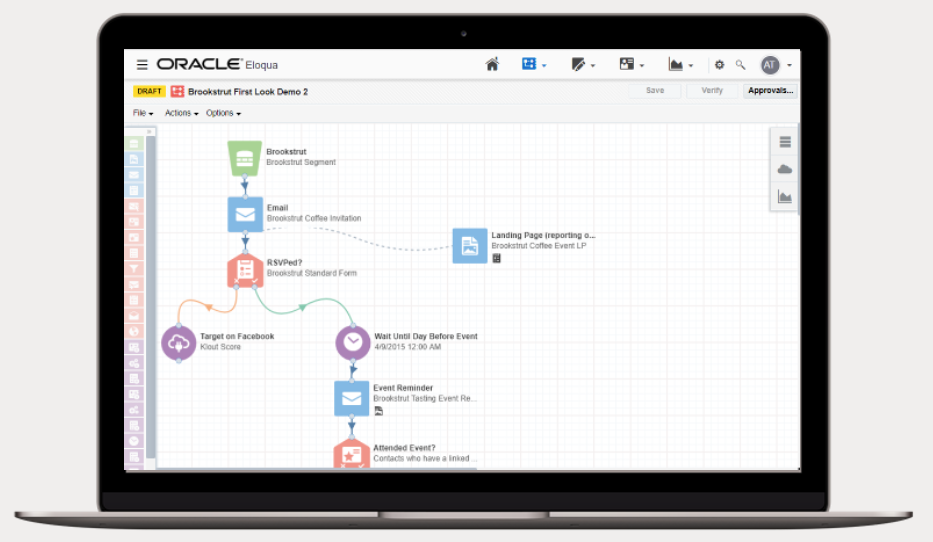One of the most satisfying aspects of my job as an Eloqua AI specialist is partnering with global brands to transform fragmented customer data into precision-guided growth engines. I’ve observed that the most successful brands in 2025 and beyond are those with the most trustworthy, complete, and actionable customer data—not just the flashiest creative. Today’s growth engine demands a shift from campaign-centric thinking to a data-driven, AI-powered operating model that turns every interaction into an immediate, personalized opportunity. Let’s explore why the future of marketing belongs to those who master their data foundation, and how you can join them.
Break Down Data Silos and Build Your Single Source of Truth
Disparate systems (email, web analytics, CRM, third-party apps, etc.) lock vital signals in their own silos. Without a unified data layer, personalization becomes guesswork. To get there, brands must start with foundational fixes in their data strategy.
When I’m working with customers, my first priority is always to tackle:
- Identity resolution at scale. Link every digital and offline interaction to a persistent customer profile.
- Privacy by design. Apply preference management at ingestion.
- Enhanced metadata. Tag every data point with origin, timestamp, and transformation log to promote usability.
This foundational work isn’t easy, but it’s non-negotiable. If your AI models are built on fragmented or stale data, you could compound errors, erode trust, and miss opportunities.
Manage Your Data
AI can amplify both strengths and blind spots. Before you train a model:
- Clean up your inputs. Standardize formats, purge duplicates, and retire legacy tables that no one owns.
- Define data lineage. Embed a chain of custody to promote auditability.
- Continuously improve. Data governance isn’t a one-and-done project—it’s a continuous discipline.
Steps taken to manage your data will pay themselves forward when you develop and deploy models.
Move From Descriptive Dashboards to Prescriptive Actions
Most teams stop at “what happened?” dashboards. That’s useful, but insufficient. The next leap is prescriptive AI: real-time recommendations and automated next-best-actions embedded where your team works.
- Automated campaign forks. If an account’s engagement score dips below your threshold, trigger a targeted re-engagement sequence without manual handoffs.
- Dynamic content swaps. Serve alternate offers or messages instantly when a prospect crosses a behavioral milestone, like visiting your pricing page or downloading a competitor comparison.
- Programmatic journey adjustments. Use fatigue metrics and send-time optimization to adjust cadence on the fly, respecting each customer’s unique engagement rhythm.
Prescriptive AI isn’t a “nice-to-have” — it’s the difference between chasing yesterday’s signals and shaping tomorrow’s growth. These AI-driven actions can help shorten sales cycles, reduce manual workloads, and enable timely, relevant engagement.

Embed AI Into the Flow of Work
AI proves its value when it lives in your marketers’ day-to-day tools, not in isolated experiments:
- Campaign design canvas. Surface predictive insights and generative content suggestions right in your drag-and-drop builder.
- Journey orchestration engine. Assign “AI agent” tasks like lead qualification, routing, and fatigue analysis so your team focuses on creative strategy and measurement.
- Closed-loop learning. Continuously feed campaign outcomes back into your models to help sharpen accuracy and accelerate time-to-value.
By shifting administrative and lower-value operational tasks to AI, you free your experts to do what humans do best: ask bold questions, craft compelling narratives, and steer strategy.
Redefine Success Around Revenue Impact
If you’re still measuring success by ’emails sent’ or ‘opens achieved,’ it’s time to move beyond vanity metrics and focus on outcomes that actually drive growth. Measure what matters:
- Incremental revenue attributable to AI recommendations. Tie every prescriptive action back to closed deals.
- Time-to-insight reduction. Track how quickly your team moves from raw data to trusted, decision-ready recommendations.
- Model confidence and integrity. Monitor data and model drift so you can optimize before small errors become big risks.
By shifting your north star to revenue and trust metrics, you align IT, legal, and marketing around the same growth agenda.
Next Steps for Today’s CMO
- Conduct a rapid data-estate audit. Map your silos, ownership gaps, and blind spots.
- Pilot one “sense-and-act” workflow. Whether it’s account-based re-engagement or real-time offer swaps, choose a high-value use case and measure revenue lift.
- Launch a cross-functional “AI council.” Bring data engineers, privacy and AI experts, creative strategists, and other stakeholders together as “sense-makers” — custodians of your AI-powered future.
Transforming marketing from art to engineered growth is no longer optional; it’s the new baseline for success. By treating every interaction as a governed data signal and embedding AI into the flow of work, you’ll turn your marketing operation into a true growth engine.
To see these strategies in action, check out the related Oracle AI World sessions below, featuring real-world use cases, customer wins, and AI-powered marketing insights:
